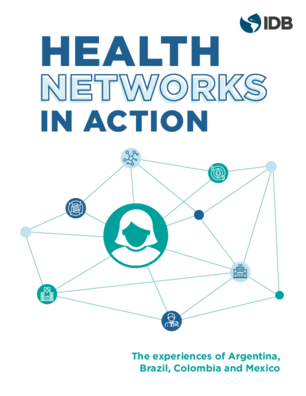Health Networks in Action: The experiences of Argentina, Brazil, Colombia and Mexico
ISBN PRINTED
9781597824125
Date
Sep 2020
EDITOR
Pinto, Diana M.; Máñez, Miguel Angel; Minué, Sergio; Perez-Cuevas, Ricardo; Regalia, Ferdinando
Integrated Health Service Delivery Networks (IHSDN) based on primary health care (PHC) are the most promising solution for health systems to satisfy the health needs of the population and to address access, efficiency, quality and equity challenges faced by health systems of the world. PHCs essential attributes (people and family centered care, comprehensiveness, continuity, longitudinality) position this approach as one of the key strategies for countries to meet the aspiration of achieving universal health coverage.
Creating care networks has been a common thread running through Latin America and the Caribbeans health policy agendas. In terms of actually putting the IHSDN model in action, there is a wide range of interpretations and experiences, with designs, scales, organizational methods, and maturity levels that vary within and between countries.
This book shares evidence of the progress made in forming and launching IHSDN in Latin America based on four case studies conducted in Argentina, Brazil, Colombia, and Mexico. The results were found by systematically applying an instrument that collects regional information on the context and features of the IHSDNs governance, funding, care models, and IHSDN management models.
The books chapters describe the characteristics of IHSDN in the four studied countries, lessons are drawn from how these IHSDN have been designed and implemented, challenges for the future are identified and recommendations are provided on what will it take to consolidate the IHSDN model in Latin America. The hypothetical story of Dioselina, illustrates throughout the book the obstacles and difficulties that arise for a diabetic patient when using health services that are not people-centered. The results shed light on how prepared IHSDN in this region are to provide patient-centered care and where to focus efforts for improvement.
The evidence found in this study will help develop and advance PHC in Latin America.
Creating care networks has been a common thread running through Latin America and the Caribbeans health policy agendas. In terms of actually putting the IHSDN model in action, there is a wide range of interpretations and experiences, with designs, scales, organizational methods, and maturity levels that vary within and between countries.
This book shares evidence of the progress made in forming and launching IHSDN in Latin America based on four case studies conducted in Argentina, Brazil, Colombia, and Mexico. The results were found by systematically applying an instrument that collects regional information on the context and features of the IHSDNs governance, funding, care models, and IHSDN management models.
The books chapters describe the characteristics of IHSDN in the four studied countries, lessons are drawn from how these IHSDN have been designed and implemented, challenges for the future are identified and recommendations are provided on what will it take to consolidate the IHSDN model in Latin America. The hypothetical story of Dioselina, illustrates throughout the book the obstacles and difficulties that arise for a diabetic patient when using health services that are not people-centered. The results shed light on how prepared IHSDN in this region are to provide patient-centered care and where to focus efforts for improvement.
The evidence found in this study will help develop and advance PHC in Latin America.
Generative AI enabled





